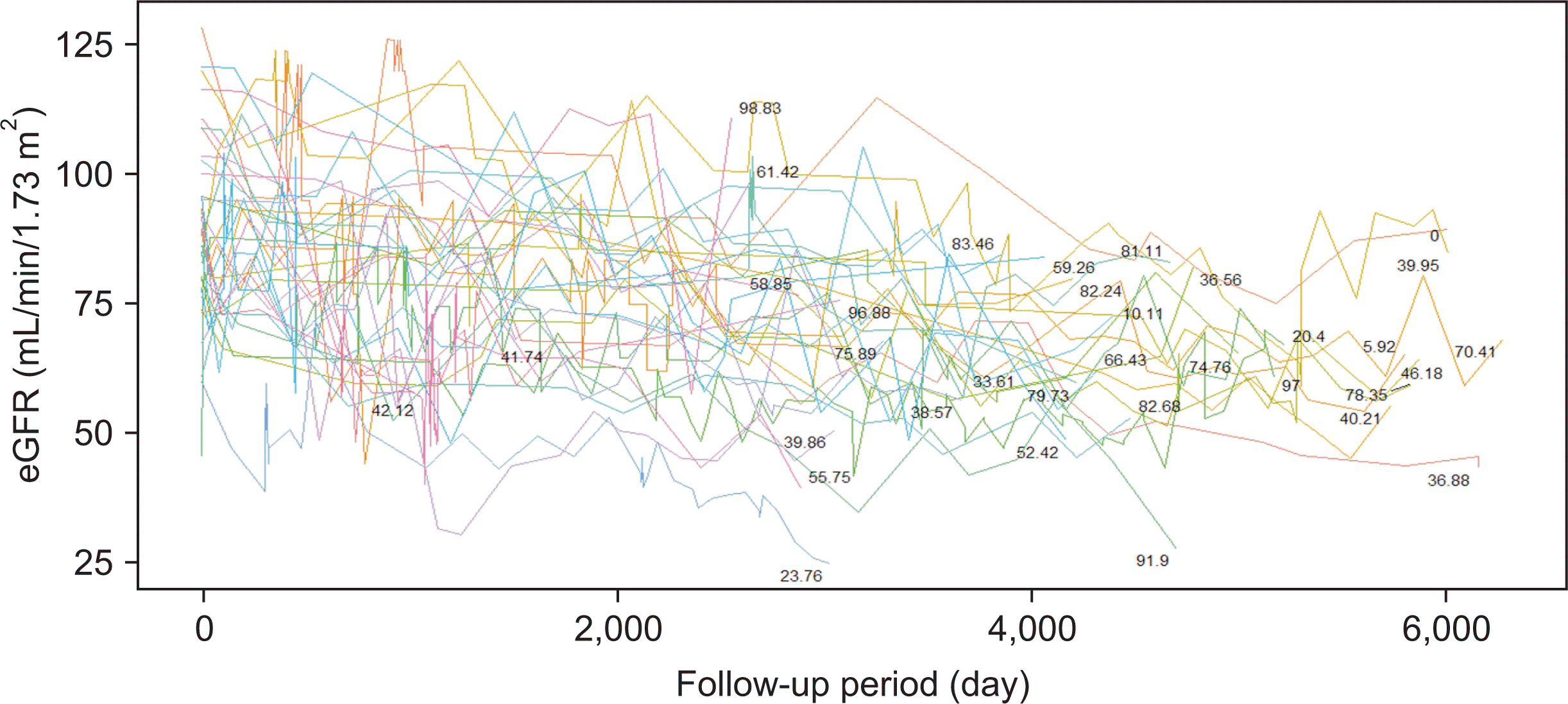1. Inman RD. 2021; Axial spondyloarthritis: current advances, future challenges. J Rheum Dis. 28:55–9. DOI:
10.4078/jrd.2021.28.2.55.
2. Robinson PC, van der Linden S, Khan MA, Taylor WJ. 2021; Axial spondyloarthritis: concept, construct, classification and implications for therapy. Nat Rev Rheumatol. 17:109–18. DOI:
10.1038/s41584-020-00552-4. PMID:
33361770.

3. Tam LS, Wei JC, Aggarwal A, Baek HJ, Cheung PP, Chiowchanwisawakit P, et al. 2019; 2018 APLAR axial spondyloarthritis treatment recommendations. Int J Rheum Dis. 22:340–56. DOI:
10.1111/1756-185X.13510. PMID:
30816645.

4. van der Heijde D, Ramiro S, Landewé R, Baraliakos X, Van den Bosch F, Sepriano A, et al. 2017; 2016 update of the ASAS-EULAR management recommendations for axial spondyloarthritis. Ann Rheum Dis. 76:978–91. DOI:
10.1136/annrheumdis-2016-210770. PMID:
28087505.
5. Ward MM, Deodhar A, Gensler LS, Dubreuil M, Yu D, Khan MA, et al. 2019; 2019 Update of the American College of Rheumatology/Spondylitis Association of America/Spondyloarthritis Research and Treatment Network recommendations for the treatment of ankylosing spondylitis and nonradiographic axial spondyloarthritis. Arthritis Care Res (Hoboken). 71:1285–99. DOI:
10.1002/acr.24025. PMID:
31436026. PMCID:
PMC6764857.

6. Wanders A, Heijde D, Landewé R, Béhier JM, Calin A, Olivieri I, et al. 2005; Nonsteroidal antiinflammatory drugs reduce radiographic progression in patients with ankylosing spondylitis: a randomized clinical trial. Arthritis Rheum. 52:1756–65. DOI:
10.1002/art.21054. PMID:
15934081.

7. Poddubnyy D, Rudwaleit M, Haibel H, Listing J, Märker-Hermann E, Zeidler H, et al. 2012; Effect of non-steroidal anti-inflammatory drugs on radiographic spinal progression in patients with axial spondyloarthritis: results from the German Spondyloarthritis Inception Cohort. Ann Rheum Dis. 71:1616–22. DOI:
10.1136/annrheumdis-2011-201252. PMID:
22459541.
10. Whelton A. 1999; Nephrotoxicity of nonsteroidal anti-inflammatory drugs: physiologic foundations and clinical implications. Am J Med. 106(5B):13S–24S. DOI:
10.1016/S0002-9343(99)00113-8. PMID:
10390124.

11. Nelson DA, Marks ES, Deuster PA, O'Connor FG, Kurina LM. 2019; Association of nonsteroidal anti-inflammatory drug prescriptions with kidney disease among active young and middle-aged adults. JAMA Netw Open. 2:e187896. DOI:
10.1001/jamanetworkopen.2018.7896. PMID:
30768191. PMCID:
PMC6484592.

12. Nderitu P, Doos L, Jones PW, Davies SJ, Kadam UT. 2013; Non-steroidal anti-inflammatory drugs and chronic kidney disease progression: a systematic review. Fam Pract. 30:247–55. DOI:
10.1093/fampra/cms086. PMID:
23302818.
13. Gooch K, Culleton BF, Manns BJ, Zhang J, Alfonso H, Tonelli M, et al. 2007; NSAID use and progression of chronic kidney disease. Am J Med. 120:280.e1–7. DOI:
10.1016/j.amjmed.2006.02.015. PMID:
17349452.
14. Zhan M, St Peter WL, Doerfler RM, Woods CM, Blumenthal JB, Diamantidis CJ, et al. 2017; Patterns of NSAIDs use and their association with other analgesic use in CKD. Clin J Am Soc Nephrol. 12:1778–86. DOI:
10.2215/CJN.12311216. PMID:
28811297. PMCID:
PMC5672983.

15. Lee TH, Koo BS, Nam B, Kim YJ, Son D, Lee S, et al. 2022; Age-stratified trends in the progression of spinal radiographic damage in patients with ankylosing spondylitis: a longitudinal study. Ther Adv Musculoskelet Dis. 14:1759720X221100301. DOI:
10.1177/1759720X221100301. PMID:
35634353. PMCID:
PMC9131377.

16. van der Linden S, Valkenburg HA, Cats A. 1984; Evaluation of diagnostic criteria for ankylosing spondylitis. A proposal for modification of the New York criteria. Arthritis Rheum. 27:361–8. DOI:
10.1002/art.1780270401. PMID:
6231933.
18. Dougados M, Simon P, Braun J, Burgos-Vargas R, Maksymowych WP, Sieper J, et al. 2011; ASAS recommendations for collecting, analysing and reporting NSAID intake in clinical trials/epidemiological studies in axial spondyloarthritis. Ann Rheum Dis. 70:249–51. DOI:
10.1136/ard.2010.133488. PMID:
20829199.

19. Levy AR, Szabo SM, Rao SR, Cifaldi M, Maksymowych WP. 2014; Estimating the occurrence of renal complications among persons with ankylosing spondylitis. Arthritis Care Res (Hoboken). 66:440–5. DOI:
10.1002/acr.22176. PMID:
24106183.

20. Ye W, Zhuang J, Yu Y, Li H, Leng X, Qian J, et al. 2019; Gender and chronic kidney disease in ankylosing spondylitis: a single-center retrospectively study. BMC Nephrol. 20:457. DOI:
10.1186/s12882-019-1658-6. PMID:
31818273. PMCID:
PMC6902329.

21. Wu Y, Zhang G, Wang N, Xue Q. 2018; Risk factors of renal involvement based on different manifestations in patients with ankylosing spondylitis. Kidney Blood Press Res. 43:367–77. DOI:
10.1159/000488071. PMID:
29539632.

22. Möller B, Pruijm M, Adler S, Scherer A, Villiger PM, Finckh A. 2015; Chronic NSAID use and long-term decline of renal function in a prospective rheumatoid arthritis cohort study. Ann Rheum Dis. 74:718–23. DOI:
10.1136/annrheumdis-2013-204078. PMID:
24356672.

23. Chiu HY, Huang HL, Li CH, Chen HA, Yeh CL, Chiu SH, et al. 2015; Increased risk of chronic kidney disease in rheumatoid arthritis associated with cardiovascular complications - a national population-based cohort study. PLoS One. 10:e0136508. DOI:
10.1371/journal.pone.0136508. PMID:
26406879. PMCID:
PMC4583248.

24. Saigal R, Agrawal AK, Goyal L, Agrawal A, Gupta N. 2017; Renal function in ankylosing spondylitis. Indian J Rheumatol. 12:156–9. DOI:
10.4103/injr.injr_93_16.

25. Murray MD, Brater DC, Tierney WM, Hui SL, McDonald CJ. 1990; Ibuprofen-associated renal impairment in a large general internal medicine practice. Am J Med Sci. 299:222–9. DOI:
10.1097/00000441-199004000-00002. PMID:
2321664.

26. Wertheimer AI. 1986; The defined daily dose system (DDD) for drug utilization review. Hosp Pharm. 21:233–4.
27. Mori S, Yoshitama T, Hirakata N, Ueki Y. 2017; Prevalence of and factors associated with renal dysfunction in rheumatoid arthritis patients: a cross-sectional study in community hospitals. Clin Rheumatol. 36:2673–82. DOI:
10.1007/s10067-017-3804-5. PMID:
28884373. PMCID:
PMC5681610.







 PDF
PDF Citation
Citation Print
Print



 XML Download
XML Download